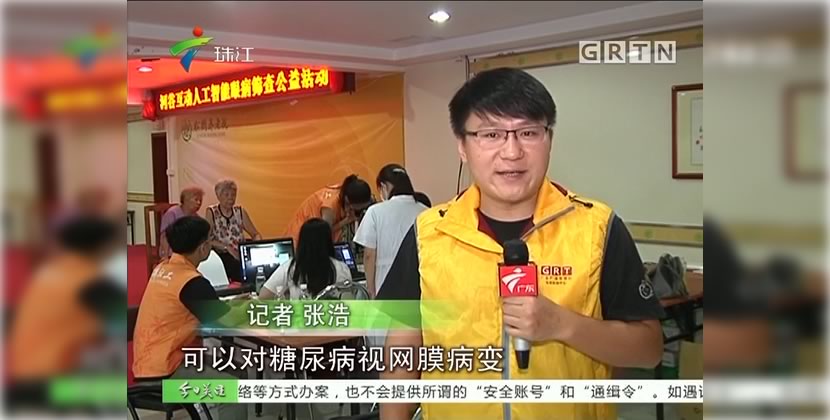
21/7/2017
Guangdong TV "Today Focus" interviewed an eye disease screening activity supported by Healgoo AI
On 21st of July 2017, Healgoo Interactive with Healgoo AI product came to Songhe Nursing Homes (Haizhu District, Guangzhou City) to carry out a free eye screening activity. Guangdong TV "Today Focus" program did a full interview during this activity. The following is the broadcast video and text content.
Artificial intelligence for eye screening for the elderly: fast and accurate!
[Host] Eye disease is one of the main problems for human health. If the disease didn't get timely detection and treatment on early stages, it may cause blindness and other serious consequences. At present, an artificial intelligence ophthalmic diagnosis system is expected to help doctors more efficient and accurate for eye screening.
[Voice] This morning, the R&D staff with Healgoo AI - an artificial intelligence ophthalmic diagnosis system, came to Haizhu District Songhe Nursing Home, to carry out a free eye disease screening for the elderly. As long as through an optometry-like instrument, after the photos were taken by the camera for left and right eyes, the data will automatically pass into Healgoo AI diagnosis system to do analysis, and quickly generates a written eye disease diagnosis report for the ophthalmologist reference. The whole process takes only a few minutes.
[VP of Songhe Nursing Home: Yuyi He] In the past, it took the whole morning for a doctor to screen about ten elderly people, now the process is simplified and the diagnosis and treatment is immediately available.
[Voice] Auntie Lee is 85 years old. A few years ago, she had a cataract surgery for her right eye. Now although the vision has improved, her left eye begins to appear fuzzy and it fears of light and has some other symptoms.
[Auntie Lee] Recently I look at things fuzzy and unclear, I feel comfortable with eyes closed, but uncomfortable with eyes open. This affects the quality of my life, I want to know whether it is cataract?
[Reporter: Hao Zhang] At present, this artificial intelligence system can diagnose four kinds of blinding diseases such as diabetic retinopathy, glaucoma, age-related macular degeneration and cataract. The artificial intelligence program can improve the efficiency of the ophthalmologist and make diagnosis more accurate and fast.
[Healgoo Interactive: Lian Song] We fed professional fundus photos to the system to learn, and these photos were marked by experts and professors with ten to twenty years experience. For each disease we selected thousands of photos for verification, and ultimately we have the system learned at a high accuracy rate. In the places with relatively low level of medical care, the system can supplement this part of the resources and enhance the quality of local primary health care services.
[Voice] Reported by Hao Zhang, Guangdong TV.

